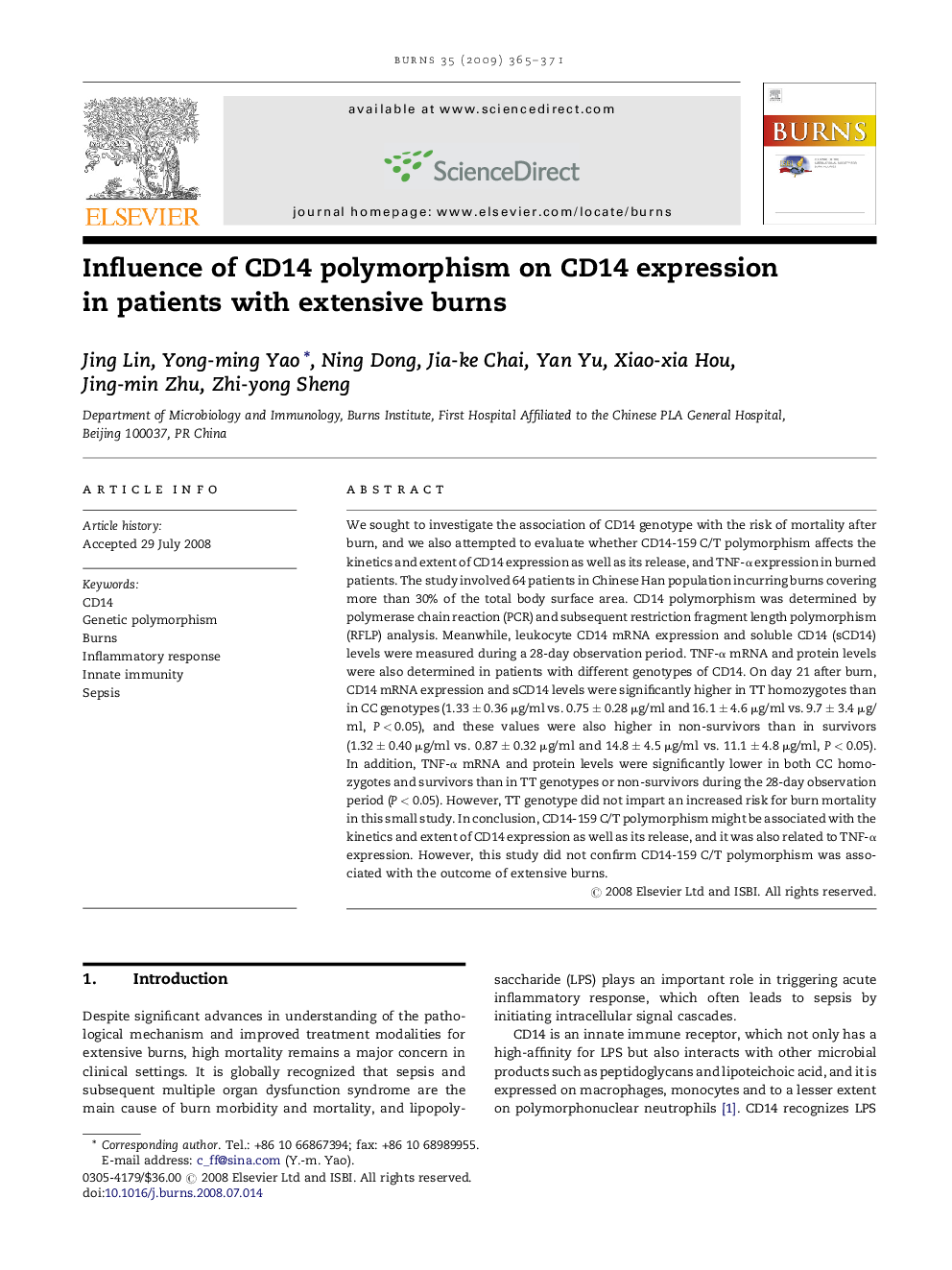| Article ID | Journal | Published Year | Pages | File Type |
|---|---|---|---|---|
| 3106224 | Burns | 2009 | 7 Pages |
Abstract
We sought to investigate the association of CD14 genotype with the risk of mortality after burn, and we also attempted to evaluate whether CD14-159 C/T polymorphism affects the kinetics and extent of CD14 expression as well as its release, and TNF-α expression in burned patients. The study involved 64 patients in Chinese Han population incurring burns covering more than 30% of the total body surface area. CD14 polymorphism was determined by polymerase chain reaction (PCR) and subsequent restriction fragment length polymorphism (RFLP) analysis. Meanwhile, leukocyte CD14 mRNA expression and soluble CD14 (sCD14) levels were measured during a 28-day observation period. TNF-α mRNA and protein levels were also determined in patients with different genotypes of CD14. On day 21 after burn, CD14 mRNA expression and sCD14 levels were significantly higher in TT homozygotes than in CC genotypes (1.33 ± 0.36 μg/ml vs. 0.75 ± 0.28 μg/ml and 16.1 ± 4.6 μg/ml vs. 9.7 ± 3.4 μg/ml, P < 0.05), and these values were also higher in non-survivors than in survivors (1.32 ± 0.40 μg/ml vs. 0.87 ± 0.32 μg/ml and 14.8 ± 4.5 μg/ml vs. 11.1 ± 4.8 μg/ml, P < 0.05). In addition, TNF-α mRNA and protein levels were significantly lower in both CC homozygotes and survivors than in TT genotypes or non-survivors during the 28-day observation period (P < 0.05). However, TT genotype did not impart an increased risk for burn mortality in this small study. In conclusion, CD14-159 C/T polymorphism might be associated with the kinetics and extent of CD14 expression as well as its release, and it was also related to TNF-α expression. However, this study did not confirm CD14-159 C/T polymorphism was associated with the outcome of extensive burns.
Related Topics
Health Sciences
Medicine and Dentistry
Critical Care and Intensive Care Medicine
Authors
Jing Lin, Yong-ming Yao, Ning Dong, Jia-ke Chai, Yan Yu, Xiao-xia Hou, Jing-min Zhu, Zhi-yong Sheng,
